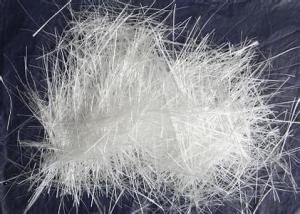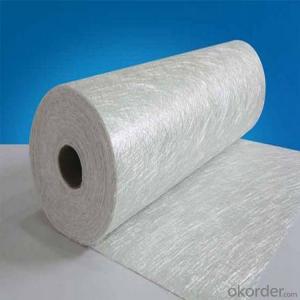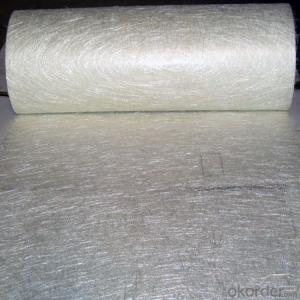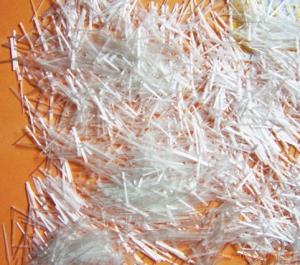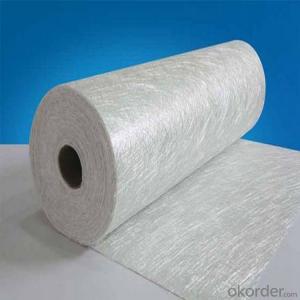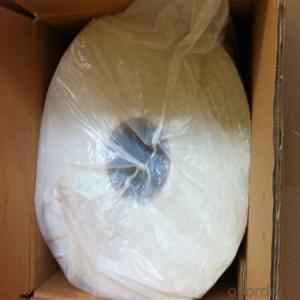Fiber Glass Chopped Strands For BMC
- Loading Port:
- China Main Port
- Payment Terms:
- TT or LC
- Min Order Qty:
- -
- Supply Capability:
- -
OKorder Service Pledge
OKorder Financial Service
You Might Also Like
1.Brief Introduction
Chopped Strands for BMC are compatible with unsaturated polyester, epoxy resin and phenolic resins.
The end-use applications include transportation, building & construction, electronic & electrical, mechanical, and light industry.
2.Product Features
Extremely low resin demand, delivering low viscosity to BMC paste
High impact strength; High LOI rate
High strand stiffness; Compatible with rubber
3.Product Specifications
Property | Fibre diameter | Moisture Content | Size Content | Chop |
(%) | (%) | (%) | (%) | |
Mathods | IS01888 | ISO3344 | ISO1887 | |
3mm | ±10 | ≤3.0 | 0.1±0.05 | 98 |
6mm | ||||
9mm | ||||
12mm |
Special specification can be produce according to customer requirements.
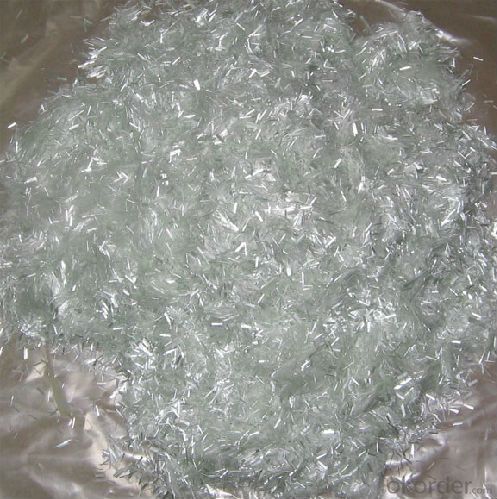
4.FAQ
Packaging:
Each bag can be taken (15-25kgs)。 Could also take a big container bag.
Storage:
Unless otherwise specified, It should be stored in a dry, cool and rain-proof area. It is recommended that the room temperature and humidity should be always maintained at 15℃~35℃ and 35%~65% respectively.
- Q:How is fiberglass chopped strand used in the oil and gas industry?
- Fiberglass chopped strand is commonly used in the oil and gas industry for various applications due to its excellent mechanical and thermal properties. It is primarily used as a reinforcement material in the fabrication of composite components and structures. One of the main uses of fiberglass chopped strand in the oil and gas industry is for the manufacturing of corrosion-resistant pipes and tubing. These pipes are subjected to harsh environmental conditions, including the presence of corrosive substances such as oil, gas, and chemicals. By adding fiberglass chopped strand to the polymer matrix of the pipes, it significantly enhances their resistance to corrosion, extending their service life and reducing the need for frequent replacements. Moreover, fiberglass chopped strand is also utilized in the production of storage tanks, vessels, and containers used in the oil and gas industry. These components require high strength, durability, and resistance to extreme temperatures and pressures. By incorporating chopped strand into the composite matrix, it reinforces the structural integrity of these products, making them capable of withstanding the demanding conditions encountered in the oil and gas sector. Additionally, fiberglass chopped strand is employed in various other applications such as insulation materials, gaskets, seals, and electrical components within the oil and gas industry. Its thermal insulation properties make it an ideal choice for insulating pipelines and equipment, preventing heat loss or gain and maintaining the desired temperature during the transportation or processing of oil and gas. In summary, fiberglass chopped strand plays a crucial role in the oil and gas industry by reinforcing composite materials used in pipes, tanks, insulation, and other components. Its exceptional mechanical strength, corrosion resistance, and thermal insulation properties make it a preferred choice for enhancing the performance and durability of crucial infrastructure and equipment in this sector.
- Q:Can fiberglass chopped strand be used for reinforcing ceramic materials?
- Yes, fiberglass chopped strand can be used for reinforcing ceramic materials. Fiberglass chopped strand is composed of small strands of glass fibers that are typically 1-3 inches long. These fibers can be added to ceramic materials such as clay or porcelain to provide reinforcement and improve their mechanical properties. When added to ceramic materials, the fiberglass chopped strand acts as a reinforcement phase, increasing the strength, toughness, and resistance to cracking of the ceramic matrix. The fibers distribute the stress across the material, preventing crack propagation and enhancing its overall durability. Furthermore, the thermal expansion coefficient of fiberglass is closer to that of ceramics compared to other reinforcing materials like steel or carbon fibers. This means that when the ceramic material expands or contracts due to temperature changes, the fiberglass reinforcement will also expand or contract at a similar rate, minimizing the risk of delamination or damage to the composite structure. Overall, the use of fiberglass chopped strand as a reinforcement in ceramic materials can significantly enhance their performance and extend their service life in various applications, including aerospace, automotive, and construction industries.
- Q:Can fiberglass chopped strand be used in electrical insulation?
- Fiberglass chopped strand is capable of being utilized for electrical insulation purposes. Due to its non-conductive nature, fiberglass does not allow for the transmission of electricity. Consequently, it can serve as an insulating material that obstructs the flow of electrical current. The chopped strand variant of fiberglass finds widespread application in the manufacturing of various electrical insulation components, including circuit boards, transformers, and electrical cables. It offers exceptional insulation properties, notable mechanical strength, and commendable resistance to thermal influences, rendering it a desirable option for electrical insulation applications. Furthermore, fiberglass chopped strand demonstrates resistance to chemicals, moisture, and temperature fluctuations, thereby further enhancing its aptitude for electrical insulation objectives.
- Q:The uses of middle alkali glass fiber chopping fabric?
- It is used for high quality asbestos tiles and glass fiber reinforced cement.
- Q:Where can I cut short glass fiber?
- Let's talk about the concept, also called glass fiber short cut, or glass fiber segment, usually using a special soaking agent of the original silk, through wet short cut online.
- Q:What are the disposal options for fiberglass chopped strand waste?
- There are several disposal options available for fiberglass chopped strand waste. One option is to recycle the waste material. Fiberglass can be recycled by grinding it down and using it as filler material in other products such as concrete or asphalt. This not only helps to reduce the amount of waste going to landfills but also allows for the reuse of the fiberglass. Another disposal option is to incinerate the chopped strand waste. Incineration can be a viable option for disposing of fiberglass waste as it can generate energy from the combustion process. However, it is important to note that incineration should only be done in facilities equipped with proper air pollution control systems to minimize the release of harmful emissions. If recycling or incineration is not feasible, landfill disposal is another option. However, this should be considered as a last resort due to the potential environmental impact. When disposing of fiberglass chopped strand waste in a landfill, it is important to ensure that the waste is properly contained and managed to prevent any potential leaching of hazardous materials. In conclusion, the disposal options for fiberglass chopped strand waste include recycling, incineration, and landfill disposal. It is recommended to prioritize recycling and incineration where possible to minimize the environmental impact of this waste material.
- Q:Can fiberglass chopped strand be used for reinforcing concrete structures?
- Fiberglass chopped strand is a viable option for reinforcing concrete structures. It is manufactured by cutting fine glass fibers into random short lengths. These shortened strands can be incorporated into concrete mixtures to bolster its tensile strength, flexural strength, and impact resistance. By blending with concrete, the chopped strands assist in evenly dispersing stress loads throughout the structure, leading to decreased cracking and heightened durability. Moreover, fiberglass chopped strand exhibits corrosion resistance, rendering it suitable for concrete structures subjected to harsh surroundings or chemicals. All in all, fiberglass chopped strand proves to be an effective and extensively utilized reinforcement material in concrete structures.
- Q:Is fiberglass chopped strand suitable for applications requiring high chemical resistance?
- No, fiberglass chopped strand is not suitable for applications requiring high chemical resistance. It can be damaged or degraded by exposure to certain chemicals.
- Q:What is the average diameter of fiberglass chopped strand?
- Fiberglass chopped strand generally displays an average diameter spanning from 10 to 25 micrometers. Nevertheless, it is crucial to acknowledge that the manufacturer and specific product type may cause variations in the particular diameter.
- Q:Can fiberglass chopped strand be used in marine applications?
- Fiberglass chopped strand is a viable option for marine applications. This versatile material possesses exceptional corrosion resistance, a favorable ratio of strength to weight, and notable impact resistance, rendering it suitable for marine environments. It is commonly employed in the construction of boats, kayaks, canoes, and other watercraft. By combining chopped strands with resins, a robust composite material is produced, capable of enduring the harsh sea conditions, such as exposure to saltwater, UV rays, and moisture. Furthermore, the ease of handling and ability to mold into various shapes, along with its commendable dimensional stability, contribute to fiberglass chopped strand's practicality. Given its durability and water resistance, this material is an exemplary choice for marine applications.
1. Manufacturer Overview |
|
|---|---|
| Location | |
| Year Established | |
| Annual Output Value | |
| Main Markets | |
| Company Certifications | |
2. Manufacturer Certificates |
|
|---|---|
| a) Certification Name | |
| Range | |
| Reference | |
| Validity Period | |
3. Manufacturer Capability |
|
|---|---|
| a)Trade Capacity | |
| Nearest Port | |
| Export Percentage | |
| No.of Employees in Trade Department | |
| Language Spoken: | |
| b)Factory Information | |
| Factory Size: | |
| No. of Production Lines | |
| Contract Manufacturing | |
| Product Price Range | |
Send your message to us
Fiber Glass Chopped Strands For BMC
- Loading Port:
- China Main Port
- Payment Terms:
- TT or LC
- Min Order Qty:
- -
- Supply Capability:
- -
OKorder Service Pledge
OKorder Financial Service
Similar products
New products
Hot products
Related keywords
